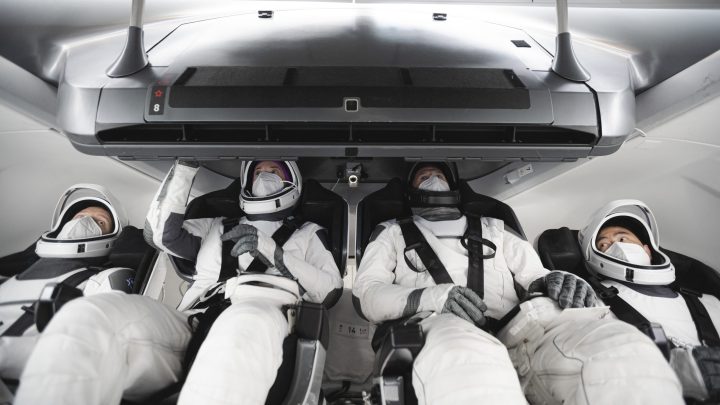
NASA and SpaceX have announced the date for the next launch of astronauts to the International Space Station (ISS) using the recently-developed Crew Dragon capsule. The capsule, which debuted in its first crewed test flight and first operational flight last year, is designed to ferry astronauts between Earth and the ISS and has been hailed as an important step forward to returning crewed orbital launches to American soil.
The next set of astronauts will be launched no earlier than Tuesday, April 20. Two NASA astronauts, Shane Kimbrough and Megan McArthur, one JAXA (Japanese Space Agency) astronaut, Akihiko Hoshide, and one ESA (European Space Agency) astronaut, Thomas Pesquet, will travel together to the ISS. They will take over from the crew members currently stationed there, and there will be some overlap. That means that the ISS will be busier than usual, with a seven-person crew for some time.
“Crew-2 also is expected to arrive at the space station to overlap with the astronauts that flew to the station as part of the agency’s SpaceX Crew-1 mission,” NASA wrote in a blog post. “Return of Crew-1 with NASA astronauts Michael Hopkins, Victor Glover, and Shannon Walker, along with JAXA astronaut Soichi Noguchi, is currently scheduled for late April or early May. Crew-2 astronauts are set to return in fall 2021.”
The Crew Dragon will be launched by a SpaceX Falcon 9 rocket, and the launch will take place from Launch Complex 39A at NASA’s Kennedy Space Center in Florida. It’s likely that the launch will be livestreamed by NASA TV, so we’ll keep you up to date with all the details on how to watch the launch as they become available.
NASA also says it is continuing work on its Crew-3 mission, which will follow the Crew-2 launch. Crew-3 includes NASA astronauts Raja Chari and Tom Marshburn, serving as commander and pilot respectively, and ESA astronaut Matthias Maurer, serving as a mission specialist.



